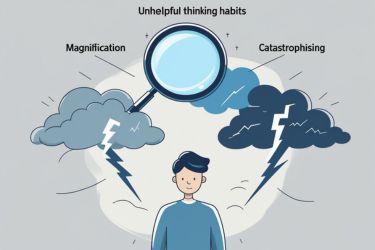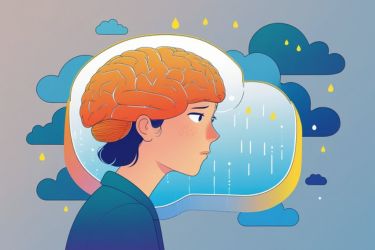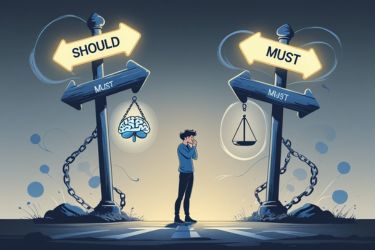Jumping to conclusions is a common thinking habit that often leads us to make quick, unfounded assumptions about situations and people. This way of thinking can lead to misunderstandings and increased stress, impacting our mental health and relationships. Recognising how we jump to conclusions is the first step towards managing these unhelpful thoughts and improving our overall wellbeing.

In our daily lives, we may find ourselves believing the worst without sufficient evidence, which can create unnecessary anxiety. It’s important to understand why we fall into this trap and to be aware of the negative effects it can have on our mental state. By exploring strategies to combat these patterns, we can learn to think more clearly and make calmer, more informed choices.
Gaining insight into jumping to conclusions helps us foster a healthier mindset, making room for constructive thoughts instead of harmful ones. By shifting our perspective, we open up opportunities for better communication and deeper connections with others.
Key Takeaways
- Jumping to conclusions can harm our mental health and lead to stress.
- Understanding the reasons behind this habit helps us address it more effectively.
- Implementing strategies to manage these thoughts can improve our overall wellbeing.
Understanding Unhelpful Thinking Habits

Unhelpful thinking habits can often cloud our judgment and lead to negative feelings. By recognising these patterns, we can gain control over our thoughts and improve our mental well-being. Let's explore the key aspects of cognitive distortions, types of unhelpful thinking styles, and the impact of automatic thoughts.
Defining Cognitive Distortions
Cognitive distortions are negative thought patterns that lead to faulty reasoning. They often affect how we view ourselves and our experiences. When we fall into these distortions, we may perceive situations in skewed or unrealistic ways.
Some common cognitive distortions include:
- All-or-Nothing Thinking: Seeing situations in black-and-white terms, without recognising the nuances.
- Overgeneralisation: Making broad conclusions based on a single event.
- Mental Filtering: Focusing only on the negative aspects of a situation while ignoring the positives.
These distortions can create a cycle of negative thinking, affecting our emotions and behaviours.
Common Types of Unhelpful Thinking Styles
Unhelpful thinking styles can lead to increased stress and anxiety. Understanding these styles helps us identify when we may be affected.
Here are some common unhelpful thinking styles:
- Catastrophising: Anticipating the worst possible outcome in any situation.
- Fortune Telling: Assuming we know what will happen in the future, often negatively.
- Personalisation: Blaming ourselves for events outside our control.
These patterns often reinforce negative thought cycles and can hinder our ability to cope with stress effectively.
The Role of Automatic Thoughts
Automatic thoughts arise quickly and often without conscious awareness. These thoughts are influenced by past experiences, reinforcing our cognitive distortions.
Examples of negative automatic thoughts include:
- "I always mess things up."
- "No one likes me."
These thoughts can trigger emotional responses and affect our actions. By recognising and challenging these automatic thoughts, we can change our thinking patterns. Techniques such as cognitive behavioural therapy (CBT) can be useful in addressing these negative thoughts.
By addressing these elements, we can reduce the impact of unhelpful thinking habits on our lives.
What Is Jumping to Conclusions?

Jumping to conclusions is a common pattern of thinking where we make hasty judgments without all the necessary information. This can lead to unfounded beliefs and negative feelings. It often takes two main forms: mind reading and fortune telling. Both of these thought processes can significantly impact our mental well-being.
The Two Main Forms: Mind Reading and Fortune Telling
Mind reading occurs when we assume we know what others are thinking. For instance, we might believe a friend is upset with us without asking them. This leads to unnecessary worry and can harm relationships. We fill in the gaps of information with our own fears and doubts.
Fortune telling, on the other hand, involves predicting negative outcomes without good reason. We might think we will fail at an important task, leading to anxiety or avoidance. These two forms can merge, resulting in the worst possible conclusion. This type of thinking can be a major hurdle in overcoming challenges.
How It Differs From Other Distortions
Jumping to conclusions is a specific type of cognitive distortion, but it stands out from others. Unlike all-or-nothing thinking, which categorises situations as black or white, jumping to conclusions creates scenarios based on imagined outcomes. We might dismiss evidence or ignore alternative explanations entirely.
Other cognitive distortions include blaming oneself or others for situations beyond our control. While blaming can lead to feelings of guilt or resentment, jumping to conclusions often produces anxiety and fear. Recognising this difference helps us understand our thought patterns and the potential harm they can cause.
Real-Life Examples of Jumping to Conclusions
Consider a workplace situation. We submit a project and immediately think, “My boss will hate this.” This thought may not be based on any real feedback, yet it affects our confidence.
In personal life, we might think a friend cancelled plans because they do not care about us. This type of mind reading ignores their legitimate reasons for rescheduling.
Such examples highlight how jumping to conclusions can lead us to negative feelings. By recognising these patterns, we can challenge our assumptions and seek a clearer perspective.
Impacts on Mental Health and Wellbeing

Jumping to conclusions can significantly affect our mental health and wellbeing. We often experience increased anxiety and stress, lower self-esteem, and negative impacts on our daily lives.
Effects on Anxiety and Stress
When we jump to conclusions, we may misinterpret situations as dangerous or threatening. This thought pattern leads to heightened feelings of anxiety and stress. For instance, assuming the worst consequences can create a cycle of worry that is hard to escape.
These negative emotions can trigger the body's stress response. As a result, we may feel tense, have faster heart rates, and struggle with sleep. Over time, this constant state of alertness can contribute to more serious mental health issues, such as chronic anxiety or depression, affecting our overall wellbeing.
Relationship to Self-Esteem
Jumping to conclusions often links to low self-esteem. We might blame ourselves for perceived failures or assume others view us negatively. This thinking can create a harmful cycle where our self-worth takes a hit.
For example, if we think a friend did not invite us out because they don't like us, this can lead to feelings of shame or inadequacy. Our self-esteem may suffer, making it harder to connect with others and engage in social situations. The result is a further decline in our mental health and happiness.
Negative Effects on Daily Life
Our daily functioning can be heavily impacted by jumping to conclusions. This mindset affects how we interpret interactions and challenges, leading to unnecessary conflict and misunderstandings.
For instance, we might avoid social gatherings due to fears about how we are perceived. This avoidance can result in isolation and loneliness. Additionally, we might struggle in work situations, misreading colleague intentions, which harms our productivity and relationships. The overall impact is a decrease in our quality of life and increased negative outcomes.
Why Do We Jump to Conclusions?

Jumping to conclusions is often driven by specific thought patterns and past experiences. These elements shape how we interpret situations and can lead to inaccurate assumptions. Understanding these factors can help us address and change this unhelpful thinking habit.
Underlying Cognitive Processes
Our brains use cognitive models to process information quickly. This can sometimes lead to hasty conclusions without all the facts. When we encounter a stressful situation, the amygdala, a part of the brain linked to emotions, becomes active. This reaction can trigger negative thoughts and intense feelings, pushing us to assume the worst.
For example, if we receive a message that seems abrupt, we might think the sender is angry. Instead of verifying this, we jump to conclusions based on our emotional state. This process often distorts our perception and prevents us from understanding the full context of situations. It reinforces negative thinking patterns that can create a cycle of anxiety and misunderstandings.
Role of Past Experiences
Our past experiences heavily influence how we interpret new situations. If we faced rejection or disappointment before, we might assume similar outcomes in future events. These memories can trigger a defensive response, leading us to conclude without evidence.
For instance, if someone in the past reacted negatively to our ideas, we might automatically assume that new ideas will be poorly received. This habit not only distorts our current perceptions but also limits our willingness to engage in new opportunities. Recognising the impact of our history can help us evaluate situations more accurately and make better choices moving forward.
Strategies to Manage Unhelpful Thinking Habits
Managing unhelpful thinking habits requires practical strategies that we can apply in our daily lives. By using cognitive behavioural therapy techniques, mindfulness, and fostering a positive mindset, we can challenge our negative thought patterns effectively.
Cognitive Behavioural Therapy Techniques
Cognitive Behavioural Therapy (CBT) offers several techniques to help us manage unhelpful thinking. One key method is cognitive restructuring, where we identify and challenge negative thoughts. For example, if we catch ourselves jumping to conclusions, we can ask:
- What evidence do I have for this thought?
- Am I ignoring any facts that contradict it?
Cognitive reframing is also essential. This involves looking at a situation from a different angle. Instead of thinking, "I always fail," we can reframe it as, "I have faced challenges but learned from them." By consistently applying these techniques, we reduce anxiety and build resilience.
Using Mindfulness for Thought Awareness
Mindfulness helps us become aware of our thoughts without judgment. Daily mindfulness practices, such as meditation or focused breathing, allow us to observe our thoughts as they arise. This awareness helps us recognise when we are jumping to conclusions.
- Practise deep breathing: This calms our mind and allows us to detach from negative thought patterns.
- Use guided imagery: Visualise our thoughts as clouds passing by, reminding ourselves that they are transient.
By observing our thoughts, we can choose how to respond, rather than reacting impulsively based on fear or negativity.
Building a Positive Mindset
Fostering a positive mindset is vital in combating unhelpful thinking. We can achieve this by actively acknowledging our achievements and strengths. Often, we discount the positive aspects of our lives, focusing instead on what went wrong.
To build positivity, we could:
- Create a gratitude journal to list at least three things we appreciate daily.
- Engage in positive self-talk by affirming our capabilities and past successes.
By consistently practising these techniques, we shift our focus from negativity to growth, reinforcing a more constructive outlook on life.
Frequently Asked Questions
In this section, we will explore common questions about the thinking habit of "jumping to conclusions." We will provide guidance on how to identify this habit, challenge it, and offer examples to clarify its impact.
How can one identify when they are 'jumping to conclusions' in their thought process?
We can identify this habit when we make assumptions without sufficient evidence. This often involves interpreting others' thoughts or predicting outcomes based on limited information. If we notice our thoughts are overly negative or based on guesses, we might be jumping to conclusions.
What methods are effective in challenging and changing 'jumping to conclusions' thinking styles?
To challenge this habit, we can practise questioning our assumptions. One useful method is asking ourselves about the evidence for our thoughts. Reflecting on past experiences may help us recognise when our conclusions are not based on facts.
Can you provide illustrations of thought patterns that exemplify 'jumping to conclusions'?
One example is assuming a colleague is upset with us without any direct communication. Another example is believing we will fail a task just because we faced difficulties before. Both patterns involve making unfounded assumptions that can lead to stress and anxiety.
What strategies are recommended for preventing the habit of 'jumping to conclusions'?
To prevent this habit, we can develop mindfulness techniques. Taking a moment to pause and assess our thoughts can help us avoid rushing to conclusions. Keeping a journal to track our feelings and thoughts can also provide clarity over time.
How do these 'jumping to conclusions' thinking styles affect mental well-being?
These thinking styles can contribute to increased anxiety and depression. By assuming the worst without evidence, we create unnecessary stress for ourselves. This cycle can lead to a negative mindset, affecting our overall mental health.
What role does 'jumping to conclusions' play within cognitive behavioural therapy frameworks?
In cognitive behavioural therapy (CBT), jumping to conclusions is identified as a cognitive distortion. We learn to recognise and challenge these thoughts during therapy sessions. By doing so, we can develop healthier thinking patterns and improve our emotional resilience.




















